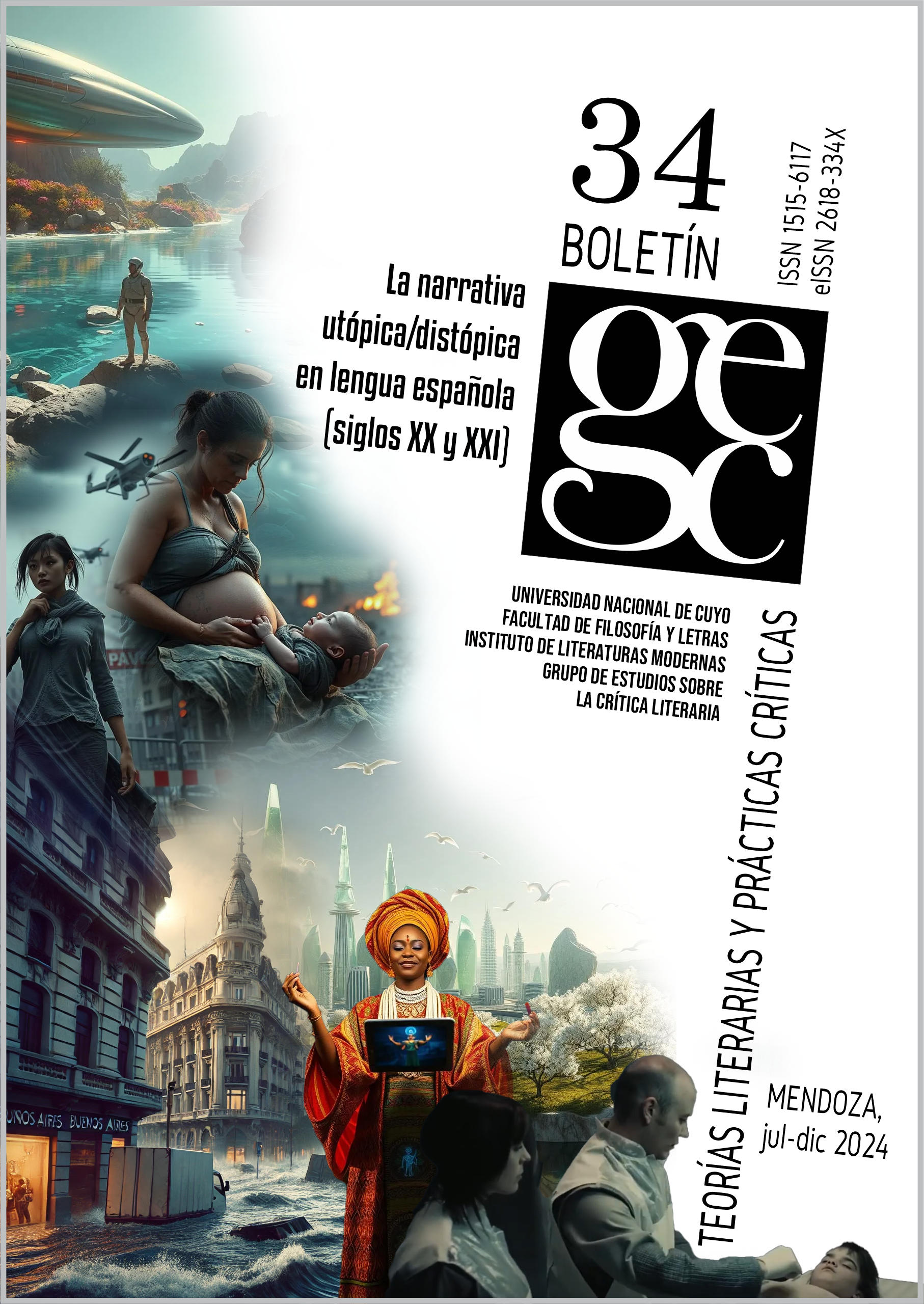Technopaganism and Dystopia in Contemporary Hispanoamerican Literature
DOI:
https://doi.org/10.48162/rev.43.068Keywords:
dystopia, technopaganism, Rita Indiana, Jorge Baradit, Latin American science fictionAbstract
The following paper analyses works by Rita Indiana and Jorge Baradit in the light of the relationship between technopaganism, a category specific to cybercultural studies, and dystopia. The technopaganism that these Latin American authors devise is not comparable to the analyses of the category made from the Global North, since they allow us to read a post-colonial and technodivergent decline of the dystopian world, where the elements of the beliefs of the native American peoples are presented at the same ontological level as the techno-scientific novum, forming an ‘oceanic thought’, ontologically flat and horizontal. At the same time, it analyses the way in which these Latin American fictions are made possible by a change in historical verisimilitude (a product of the computer revolution, among other processes) that reimagines the relationship between science fiction and (grotesque) realism.
References
Bajtín, M. (1990). La cultura popular en la Edad Media y en el Renacimiento: El contexto de François Rabelais. Alianza Universidad.
Baradit, J. (2007). Ygdrasil. Ediciones B.
Carrión, J. (2020). Lo viral. Galaxia Gutemberg.
Caruso, M. C. (2023). Más allá del afrofuturismo anglosajón. El futurismo caribeño: La Santería en La mucama de Omicunlé de Rita Indiana. Kamchatka, (22), 263-287. https://turia.uv.es/index.php/kamchatka/article/view/24223
De Rosso, E. (2020). La línea de sombra: Literatura latinoamericana y ciencia ficción en tres novelas contemporáneas. Revista Iberoamericana, 78(238-239), 311-328. https://www.liverpooluniversitypress.co.uk/doi/10.3828/reviberoamer.2012.78238239311
Deckard, S. y Ollof, K. (2020). The One Who Comes from the Sea: Marine Crisis and the New Oceanic Weird in Rita Indiana’s La mucama de Omicunlé (2015). Humanities, 9(3), s.p. https://www.mdpi.com/2076-0787/9/3/86
Deleuze, G. (2009). Diferencia y repetición. Amorrortu.
Dery, M. (1998). Velocidad de escape: La cibercultura en el final del siglo. Siruela.
Figueroa S. y Martínez-Hernández, L. (2021). Ecologías queer caribeñas y capitalismo del desastre en La mucama de Omicunlé (2015) de Rita Indiana. Tekoporá, 3(1), s.p. https://revistatekopora.cure.edu.uy/index.php/reet/article/view/126
Fisher, M. (2016). Realismo capitalista ¿Hay alternativa? Caja negra.
Garrido Castellano, C. (2017). “La elocuencia que su entrenamiento como artista plástico le permitía’. Subalternidad, cultura e instituciones en La mucama de Omicunlé de Rita Indiana Hernández”. Hispanic Research Journal, 18(4), 352-364. https://www.tandfonline.com/doi/abs/10.1080/14682737.2017.1337845
Hui, Y. (2020). Fragmentar el futuro: Ensayos sobre tecnodiversidad. Caja negra.
Indiana, R. (2015). La mucama de Omicunlé. Periférica.
Lugo Aracena, V. C. (2018). “¿Qué coño es esto?”: Exploración de identidad de género y de orientación sexual en La mucama de Omicunlé. [Tesis de Honor, Colby College] https://digitalcommons.colby.edu/honorstheses/893
Martorell Campos, F. (2020). Nueve tesis introductorias sobre la distopía. Quaderns de Filosofía, 7(211-33. https://turia.uv.es//index.php/qfilosofia/article/view/20287
Mosquera, M. (2020). De matrices, híbridos y síntomas: ciencia ficción y realismo en tres novelas latinoamericanas contemporáneas. Mitologías hoy, 22, 281-296. https://revistes.uab.cat/mitologias/article/view/v22-mosquera
Downloads
Published
How to Cite
Issue
Section
License
Copyright (c) 2024 Mariano Ernesto Mosquera

This work is licensed under a Creative Commons Attribution-NonCommercial-NoDerivatives 4.0 International License.
Aquellos autores/as que tengan publicaciones en esta revista, aceptan los términos siguientes:
- Los autores/as conservarán sus derechos de autor y garantizarán a la revista el derecho de primera publicación de su obra, el cual estará simultáneamente sujeto a la Licencia de reconocimiento de Creative Commons que permite a terceros compartir la obra siempre que no se use para fines comerciales, siempre que se indique su autor y su primera publicación en esta revista, y siempre que se mencionen la existencia y las especificaciones de esta licencia de uso.
- Los autores/as podrán adoptar otros acuerdos de licencia no exclusiva de distribución de la versión de la obra publicada (p. ej.: depositarla en un archivo telemático institucional o publicarla en un volumen monográfico) siempre que se indique la publicación inicial en esta revista y se cumplan las otras condiciones mencionadas arriba.
- Se permite y recomienda a los autores/as difundir su obra a través de Internet (p. ej.: en archivos telemáticos institucionales o en su página web) antes y durante el proceso de envío, lo cual puede producir intercambios interesantes y aumentar las citas de la obra publicada. (Véase El efecto del acceso abierto).








